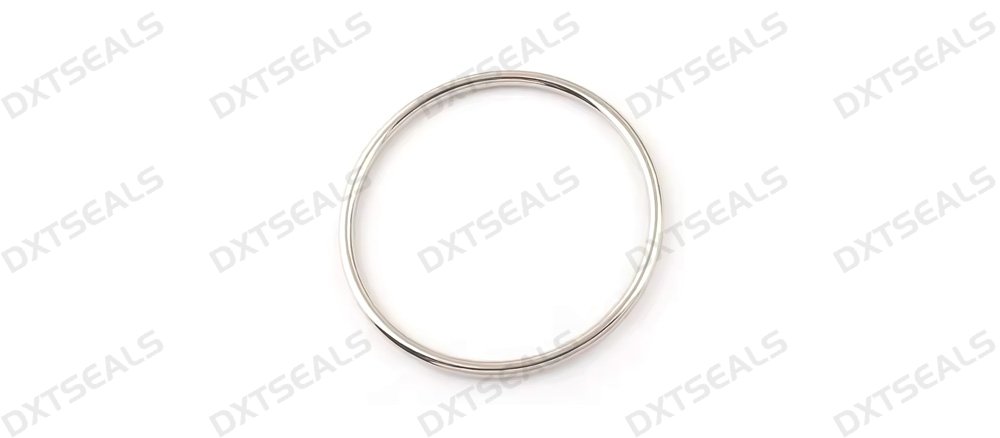
Metal O-ring seals are specialized sealing components designed to meet the demands of extreme environments where traditional rubber or elastomeric seals may fail. Known for their durability, high-pressure resistance, and exceptional performance in challenging conditions, metal O-ring seals are crucial in industries that require long-lasting, reliable sealing solutions. This article delves into the key features of metal O-ring seals and explores their diverse applications across various sectors.
1. What Are Metal O-Ring Seals?
Metal O-ring seals are circular sealing elements made from materials like stainless steel, Inconel, copper, or other high-strength metals. Unlike conventional rubber O-rings, metal O-ring seals are designed to handle extreme pressure, temperature, and chemical environments, making them ideal for demanding industrial applications.
2. Key Features of Metal O-Ring Seals
Metal O-ring seals offer a variety of features that make them stand out in industrial and high-performance applications. Their unique properties include:
- High Temperature Resistance: Metal O-rings can withstand temperatures far beyond the limits of rubber seals, with some materials able to resist heat up to 1000°C (1832°F). This makes them ideal for use in engines, turbines, and other high-heat environments.
- Exceptional Pressure Tolerance: Metal O-ring seals are designed for high-pressure environments where elastomeric seals would be prone to deformation or failure. They maintain a secure seal under both static and dynamic conditions, making them ideal for hydraulic and pneumatic systems.
- Corrosion and Chemical Resistance: Depending on the metal used, these seals can resist corrosion, oxidation, and chemical exposure, ensuring long-term performance even in harsh environments like oil refineries, chemical plants, and offshore platforms.
- Durability and Longevity: Metal O-ring seals have a longer lifespan compared to rubber or plastic seals, thanks to their resistance to wear and tear. This reduces maintenance needs and downtime, making them cost-effective for applications requiring consistent, reliable performance.
- Customizable Designs: Metal O-ring seals can be manufactured in various sizes, materials, and coatings, ensuring they meet specific requirements for different industries. This flexibility allows for tailored solutions that match the specific sealing needs of each application.
3. Common Materials for Metal O-Ring Seals
- Stainless Steel: Widely used for its corrosion resistance and ability to withstand high temperatures and pressures.
- Inconel: A high-performance alloy known for its exceptional temperature and oxidation resistance, making it suitable for extreme environments.
- Copper: Copper O-rings offer good thermal conductivity and are often used in applications requiring both sealing and heat dissipation.
4. Applications of Metal O-Ring Seals
The versatility of metal O-ring seals makes them indispensable in various industries. Here are some of the key areas where these seals are commonly used:
- Aerospace Industry: Metal O-ring seals are essential in aircraft engines, turbines, and fuel systems, where they must withstand extreme pressure, temperature, and vibration. Their ability to maintain a reliable seal in these conditions is critical for safe and efficient flight operations.
- Automotive Industry: In high-performance engines, exhaust systems, and turbochargers, metal O-ring seals are used for their heat resistance and durability. They are crucial for sealing components that are exposed to high temperatures and pressures.
- Oil and Gas: The oil and gas industry relies on metal O-ring seals for high-pressure and high-temperature applications, such as valves, pumps, and drilling equipment. Their resistance to harsh chemicals and corrosive environments makes them ideal for offshore platforms and refineries.
- Chemical Processing: In chemical plants, metal O-rings are used in reactors, pipelines, and storage tanks due to their ability to withstand aggressive chemicals and maintain a reliable seal under varying pressure and temperature conditions.
- Power Generation: Power plants, particularly those using steam turbines and nuclear reactors, require seals that can withstand extreme heat and pressure. Metal O-rings are used in critical components like heat exchangers and turbines to ensure leak-proof operation.
5. Advantages of Metal O-Ring Seals Over Rubber Seals
While rubber O-ring seals are more common in everyday applications, metal O-ring seals offer distinct advantages in specialized environments:
- Temperature and Pressure: Metal O-ring seals outperform rubber seals in high-temperature and high-pressure situations, where rubber would degrade or deform.
- Longevity: Metal seals offer longer service life, reducing the need for frequent replacements and maintenance, which is especially important in industries where downtime is costly.
- Chemical Compatibility: Metal O-rings provide better resistance to chemicals, oils, and other aggressive substances that could cause rubber seals to swell, crack, or fail.
6. Conclusion
Metal O-ring seals provide a robust and reliable solution for industries that operate under extreme temperature, pressure, and chemical exposure. With their high durability, resistance to harsh environments, and customizable options, they are essential for aerospace, automotive, oil and gas, and chemical processing industries. As the demand for more reliable and long-lasting sealing solutions grows, metal O-ring seals continue to be a critical component in ensuring operational efficiency and safety across various sectors.
